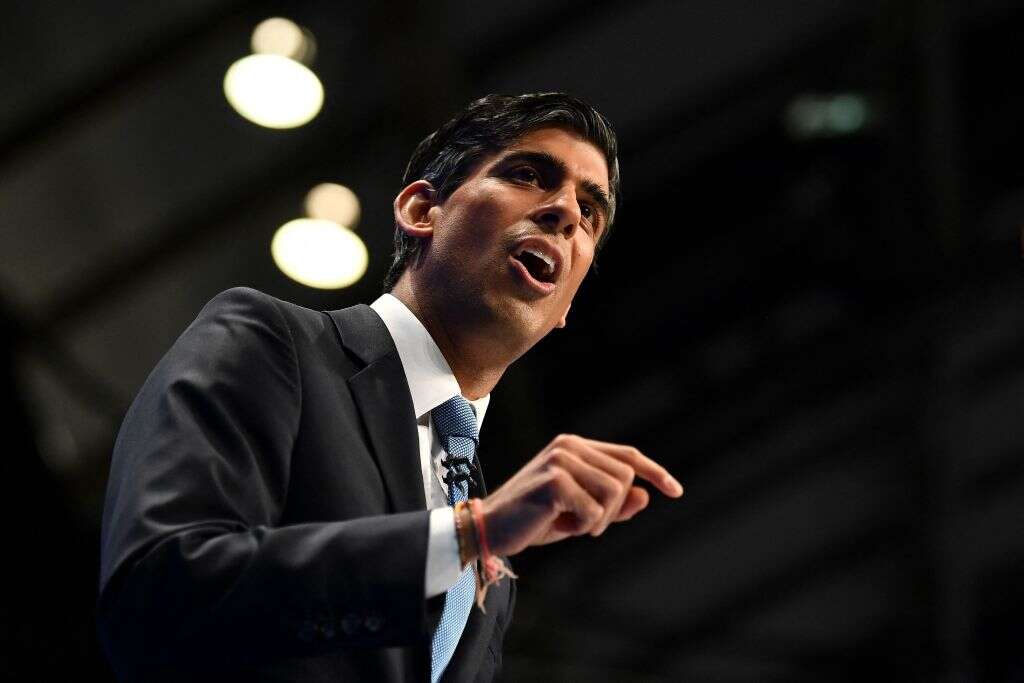
Chancellor Rishi Sunak has been criticised following an interview this morning where he blamed the government’s outdated IT systems for the Treasury’s failure to raise benefits in line with inflation to help people deal with the cost of living crisis.
Sunak’s interview came on the same day it was reported the government plans to slash the number of civil servants employed across the country, suggesting it may end up putting a greater reliance on tech to deliver public services.

Sunak had been urged to increase benefits to match inflation, which is expected to hit 10% later this year according to Bank of England forecasts. Instead, he hiked payments by 3.1%, the level of inflation last September, as is customary in times where inflation remains relatively stable. Questioned about the decision in an interview with Bloomberg, Sunak said: “The operation of our welfare system is technically complicated. It is not necessarily possible to [increase benefits] for everybody. Many of the systems are built so it can only be done once a year, and the decision was taken quite a while ago.”
Earlier today it was reported the government plans to cut 90,000 civil service jobs, a fifth of its workforce, in a bid to save £3.5bn. In response, a Number 10 spokesman said: “It’s always important for the civil service to make sure we’re as efficient as possible and there’s no duplication in our work.
“We’re obviously living in a period where we see regular technological and innovative change that allow us to work differently and adapt to new methods. We’ll want to look closely at where we can incorporate new technology into how the civil service works and make sure we’re as efficient as possible for the future.”
Whether the civil service is ready for greater digitisation, however, remains to be seen.
Rishi Sunak benefits tech comments ‘laughable’
Sunak is correct to say that the systems used by the Department for Work and Pensions (DWP) are outdated. “We’re talking about 30-year-old mainframe systems that you don’t want to tinker with too much because you can’t afford them to fail,” says Rob Anderson, research director for public sector at GlobalData.
The DWP’s reliance on legacy technology was criticised by parliament’s Public Accounts Committee in January, which told the department to review its IT strategy after a reliance on out-of-date systems and manual processing was blamed for historic underpayments to thousands of people, mainly pensioners, totalling more than £1bn.
The committee’s report showed that the DWP had chosen not to replace the Pension Service Computer System, which was introduced in 1988, instead introducing new technology to run alongside the legacy systems. This meant caseworkers need to access three other IT systems to get all relevant details on claimants, increasing the chance of errors.
Despite this, Anderson described Sunak’s comments as “laughable”, pointing out the Treasury and DWP were able to set up payments through the furlough scheme, which supported workers during the Covid-19 pandemic, with very little notice.
“It’s incredible to hear a senior minister come out with something like that,” Anderson says. “We’re not talking about a once-a-year change routine. It could be done.”
Civil service digitisation: will job cuts drive change?
The plan to cut jobs in the civil service was described as “either another headline-grabbing stunt or a reckless slash-and-burn to public services,” by the head of the civil service union, Dave Penman. The cuts would take the service back to its 2016 level of staffing.
GlobalData’s Anderson is sceptical about whether greater digitisation will be introduced to help reduce the civil service. “There ought to be ways of introducing new technologies, save time and allow fewer people to focus on doing the right things,” he says. “But the likelihood of that happening is fairly slim [as] there’s no overriding drive across government, nobody with the passion to make reform happen.
“There’s a natural inertia and unwillingness among long-term civil servants to change,” he adds. “That’s receding as bright young Oxbridge graduates progress through the system, but there will need to be someone with overriding control who will drive change from the top.”
Some change is occurring within the civil service. Laura Gilbert, chief analyst at 10 Downing Street, says the culture within the civil service makes innovation difficult. Speaking at the AWS Summit in London last month, Gilbert said: “I’m working in a system where the incentivisation system is not set up all that well to introduce data science and drive innovation and progress.”
However, Gilbert, who was recruited to build and lead a data science function at Number 10, said her team has had some success changing perceptions of technology, and introducing APIs which allow for secure access to data across departments, as well as digitising some of the information received by the Prime Minister.
“It’s a space where things haven’t changed for a very long time and where people make and own decisions in areas they feel they are experts in,” Gilbert said. “We come in and say we can help them make those decisions better, and not everybody wants that. But it’s an area that’s ripe for change, and while there’s a lot of work to do across government on data science, it is embedded now.”






